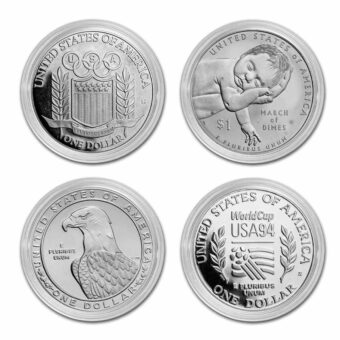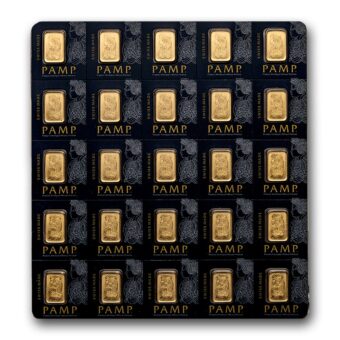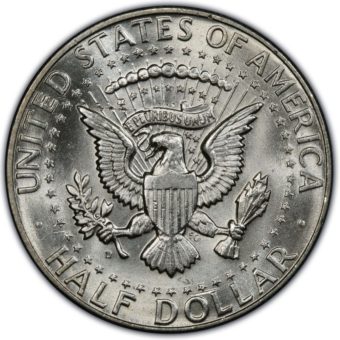In a week marked by shifting geopolitical landscapes and persistent questions about monetary policy, gold and silver moved through significant price swings. Understanding these dynamics is essential for anyone aiming to navigate today’s complex financial environment with clarity and purpose.
Monday – 6.23.25: Mild Gains as Tensions Emerge
Gold and silver prices gained modest ground Monday as measured safe-haven demand followed U.S. airstrikes targeting Iranian nuclear facilities. While markets remained largely composed, gold closed $21.90 higher at $3,407.70, and silver advanced $0.213 to $36.235. Although limited U.S. engagement was widely anticipated, uncertainty lingered regarding the operation’s long-term impact and Iran’s potential reaction. Market participants maintained a cautiously constructive stance amid unfolding developments.
Tuesday – 6.24.25: Ceasefire Weighs on Metals
Precious metals retraced gains Tuesday, touching three-week lows after Iran and Israel reached a ceasefire agreement that tempered geopolitical concerns. August gold declined $69.10 to $3,326.20, while July silver shed $0.537 to $35.645. U.S. equities climbed as President Trump hailed the resolution of the “12-day war.” Meanwhile, Fed Chair Jerome Powell’s congressional testimony provided little new insight into the path of monetary policy.
Wednesday – 6.25.25: Confidence Weakens, Metals Recover Slightly
Gold and silver inched higher Wednesday as attention returned to underlying risks despite the ceasefire’s apparent durability. August gold added $8.20 to settle at $3,342.10, with July silver up $0.348 to $36.08. U.S. consumer confidence fell notably in June, as the Conference Board’s index dropped to 93.0—below expectations—and spotlighted ongoing concerns over tariffs, rising costs, and a potential economic slowdown.
Thursday – 6.26.25: Dollar Softens, Silver Outperforms
Midweek trading saw gold consolidate while silver moved decisively higher. August gold steadied at $3,343.00, supported by a softer dollar, and July silver climbed $0.449 to $36.545. Broader market sentiment improved as the ceasefire between Israel and Iran held, contributing to a measured risk appetite. Many remained attentive to forthcoming data expected to influence near-term direction.
Friday – 6.27.25: Trade Optimism Pressures Gold
On Friday, gold and silver retreated, with August gold sliding $61.70 to a four-week low at $3,286.30 and July silver losing $0.796 to $35.795. As geopolitical tensions receded further, safe-haven demand moderated. Optimism over a new U.S.-China trade agreement lifted equities worldwide, though details of implementation remained limited.
Gold Slides Below $3,300 as Inflation Outpaces Consumption
The Big Picture:
Gold remained under pressure despite inflation exceeding forecasts. The Fed’s preferred gauge, the core PCE index, climbed 2.7% year-over-year in May. But as spending and income contracted, concerns over sluggish demand became more pronounced.
What’s Happening:
Core PCE inflation increased 0.2% in May. However, personal income dropped 0.4%, and spending declined 0.1%. Spot gold slipped 1.64% to $3,272 an ounce as markets assessed the tension between elevated costs and waning consumption.
By the Numbers:
- Spot gold: $3,272 (–1.64%)
- Annual core PCE: +2.7%
- Personal income: –0.4%
- Personal spending: –0.1%
Why It Matters:
Persistent inflation paired with slowing demand underscores a mixed backdrop. While historically such dynamics have lent support to gold, current conditions have yet to spark sustained accumulation. Many are awaiting clearer policy signals before reallocating capital decisively.
The Bottom Line:
Until economic data or policy direction shifts more decisively, gold may continue consolidating below $3,300, reflecting the balance of inflation concerns and moderated safe-haven flows.
Musk’s Cost-Cutting Effort Encounters Bureaucratic Headwinds
The Big Picture:
The Department of Government Efficiency (DOGE) set out to eliminate $2 trillion in federal waste. Despite early progress, resistance quickly mounted, highlighting the structural complexities inherent in public administration.
What’s Happening:
Efforts to reduce spending in areas like foreign aid and education were scaled back in reconciliation legislation. Musk emphasized that significant gains in productivity are essential for long-term sustainability. As Ludwig von Mises observed, bureaucracies often operate by rules rather than by dynamic market signals.
By the Numbers:
- Targeted cuts: $2 trillion
- Verified savings: Limited relative to overall spending
- Agencies examined: USAID, Department of Education, others
- Final outcome: Proposed reductions reversed
Why It Matters:
The DOGE initiative illustrated the challenges of translating private-sector efficiencies into the public sector. Even with innovative leadership, complex governance structures often slow or dilute reform.
The Bottom Line:
While ambitious in scope, the effort demonstrated that significant transformation in public finance may require deeper structural rethinking beyond leadership alone.
Gold Finds Support as Focus Turns to Fed Strategy
The Big Picture:
Gold prices were stable midweek as geopolitical risks faded and market attention shifted to the Federal Reserve’s policy outlook.
What’s Happening:
August gold futures advanced $8.60 to $2,347.00. The Dollar Index slipped 0.23% to 97.74, and equities posted mixed results. Market participants analyzed Powell’s testimony for signs of a policy pivot.
Powell maintained a careful approach, noting that tariffs could temporarily increase prices and slow growth but needed further evaluation. Futures markets reflected a roughly 25% probability of a July rate cut.
By the Numbers:
- August gold futures: $2,347.00 (+$8.60)
- Dollar Index: 97.74 (–0.23%)
- July rate cut probability: 24.8%
Why It Matters:
Gold’s recent stability underscores the shift from purely crisis-driven demand to a broader focus on monetary policy, inflation, and currency dynamics.
The Bottom Line:
Gold remains resilient as markets look to central bank signals rather than short-term events for direction.
Gold Holds Ground Despite Housing Market Weakness
The Big Picture:
Gold prices stayed near unchanged even as U.S. new home sales posted steep declines, highlighting the market’s current emphasis on macro signals over individual data releases.
What’s Happening:
New home sales fell 14% in May to a 623,000 annual pace, down from April’s revised total. Year-over-year, sales declined 6.3%. Despite the weak report, spot gold was steady at $3,321.64 an ounce as markets waited for broader confirmation of a slowdown.
By the Numbers:
- May sales: 623,000 (–14%)
- Year-over-year: –6.3%
- Median price: $426,600 (+3.7%)
- Spot gold: $3,321.64 (flat)
Why It Matters:
Housing data often offers early indications of broader economic shifts. However, gold has so far shown limited response, reflecting a market in transition.
The Bottom Line:
For now, precious metals remain anchored near support levels as attention centers on policy signals and growth indicators.
Economic Calendar: June 30 – July 4, 2025
Tuesday, July 1
- 9:45 AM ET – S&P Final Manufacturing PMI
- 10:00 AM ET – JOLTS Job Openings
- 10:00 AM ET – ISM Manufacturing Index
Wednesday, July 2
- 8:15 AM ET – ADP Employment Report
Thursday, July 3
- 8:30 AM ET – Initial Jobless Claims
- 8:30 AM ET – Employment Situation Report
- 9:45 AM ET – S&P Final Services PMI
- 10:00 AM ET – ISM Services Index
Friday, July 4
- Independence Day holiday (no reports)
Impact on Precious Metals Markets
S&P Final U.S. Manufacturing PMI (Tuesday, July 1):
Revisions to manufacturing data could prompt volatility. A downward adjustment may support gold and silver if growth concerns intensify, while strong figures could weigh on metals.
JOLTS Job Openings (Tuesday, July 1):
A sharp decline in openings could signal easing labor tightness—potentially supportive of gold. Elevated vacancies might reinforce inflation expectations and cap upside.
ISM Manufacturing Index (Tuesday, July 1):
A contraction may boost safe-haven buying, while robust readings could encourage profit-taking in precious metals.
ADP Employment Report (Wednesday, July 2):
Private-sector job strength could pressure gold if it raises the likelihood of continued rate hikes. Softer data might improve sentiment for metals.
Initial Jobless Claims (Thursday, July 3):
Rising claims could revive concerns over labor market softness and strengthen demand for gold and silver.
Employment Situation Report (Thursday, July 3):
The most significant release of the week. Weaker payrolls or higher unemployment could lift metals, while a strong report may weigh on prices.
S&P Final U.S. Services PMI (Thursday, July 3):
A downward revision could bolster gold on growth concerns; strong data may cap upside.
ISM Services Index (Thursday, July 3):
A weaker reading may reinforce safe-haven buying, while resilience in services could limit gold’s appeal.
Ready to deepen your understanding and explore ways to preserve your purchasing power?
Discover more resources and insights on building tangible wealth with precious metals at PrimeAssets.com.


















